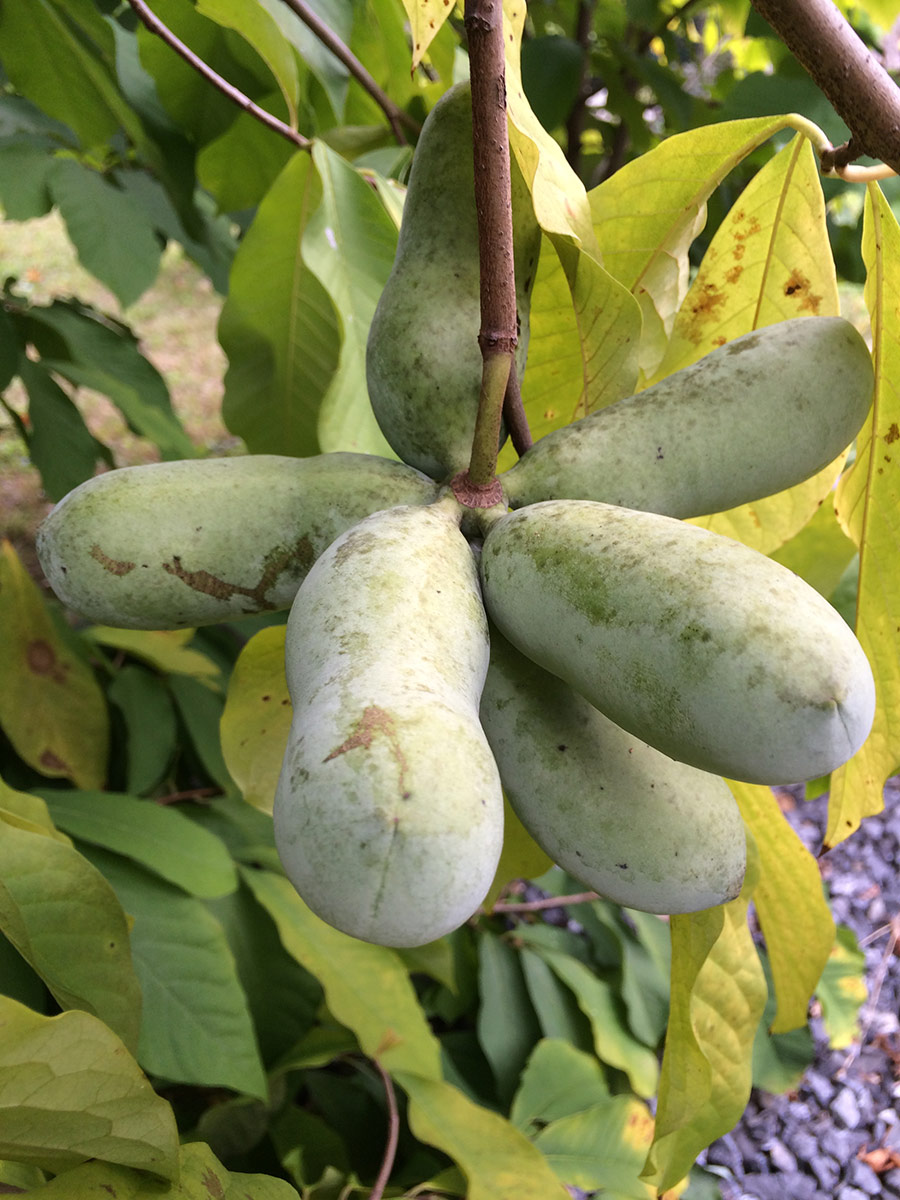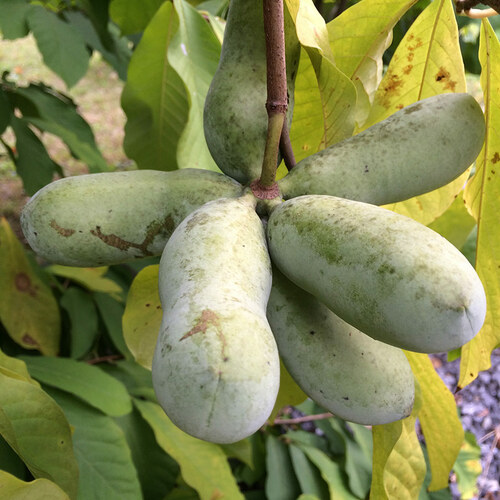
Happy Monday GPODers!
We’ve got a very educational submission today, courtesy of a very intrepid couple who have taken an appreciation for plants and transformed it into a lifestyle that allows them to inspire and educate on their amazing land in Stone Ridge, NY that they share with the public. Instead of looking at garden beds or container plantings (though, we might be able to encourage them to share more photos of their incredible arboretum and botanical garden if we’re lucky), today we’re learning about an important and beautiful native tree.
Our gardening journey started 25 years ago when we moved to the lower Hudson Valley in New York. As visual artists, we first put in plants that were for our artwork, those that had interesting seedpods and flower parts as well as those that attracted interesting insects. We also knew we wanted cold-hardy fruit trees and, after doing some research, decided to put in several pawpaw trees (Asimina triloba, Zones 5–8) since we had heard the trees would take at least ten years to start fruiting. We also planted faster-growing fruiting plants like blueberries, blackberries, peaches and elderberries to name a few.
Fast forward and the 3-acre property of mostly grass has blossomed to a total of 21 acres, which is now a nonprofit level II arboretum-botanical garden that is open to the public to inspire and educate. With over 100 types of fruit and nut plants, pawpaws remain one of our most anticipated and beloved crops. The fruit ripens in mid to late September in our zone 6b growing environment, and since pawpaws are not sold at most commercial markets because of their short shelf-life, this is a great fruiting tree for a home gardener. Their fruit tastes like a combination of creamy mango/banana/vanilla custard.
We feel they are best enjoyed fresh, by cutting the fruit and squeezing out the pulp. Over the years we have figured out that the bountiful harvests a tree can produce can be dealt with by freezing any of the extra ripe fruits. After twenty minutes of thawing, the partially frozen pawpaws are like having pawpaw ice cream, without the extra fat and sugar. Delicious!
These trees can get large, so give them plenty of space to grow. They make a great ornamental shade tree because of its tropical-looking foliage.
Since you need more than one tree for pollination, we planted several of these native trees, both the straight species and the cultivated varieties bred for earlier ripening and larger fruits. We had read that only a carrion fly would pollinate the strange-looking burgundy flowers that face downwards. The blossoms are said to emit a smell like rotting meat to attract these flies, but they don’t smell that bad to us. Over the years, we have seen many different types of fly species visit the flowers. Since flies can be lazy pollinators, we occasionally use a paintbrush to hand-fertilize the flowers to ensure that we are bestowed with a lot of fruit. This allows us to share with garden visitors who have never tried this tasty and unique fruit, or have them planted and are waiting for the lucky day when their trees will finally mature enough to start fruiting!
Allyson Levy and Scott Serrano, Executive Directors & Co-Founders of Hortus Arboretum and Botanical Gardens
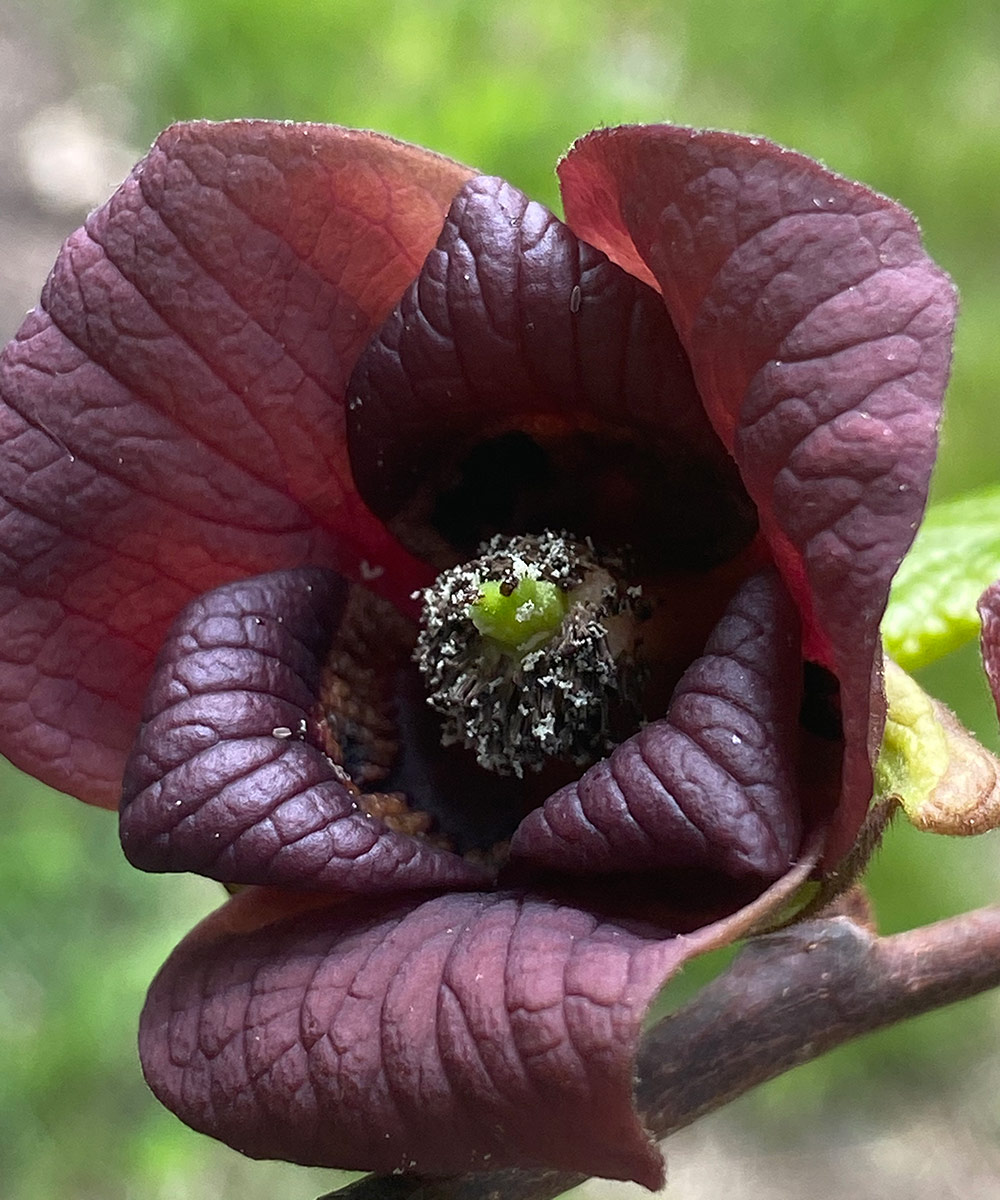 One of those “strange-looking burgundy flowers” that Allyson and Scott described. And, indeed, these curious little blooms seem a world away from the often-delicate flowers of many other fruit trees. But for someone looking for something a little more out-of-the-norm, this would be a great addition to a garden… that is, if you agree with Allyson and Scott that the smell isn’t too bad.
One of those “strange-looking burgundy flowers” that Allyson and Scott described. And, indeed, these curious little blooms seem a world away from the often-delicate flowers of many other fruit trees. But for someone looking for something a little more out-of-the-norm, this would be a great addition to a garden… that is, if you agree with Allyson and Scott that the smell isn’t too bad.
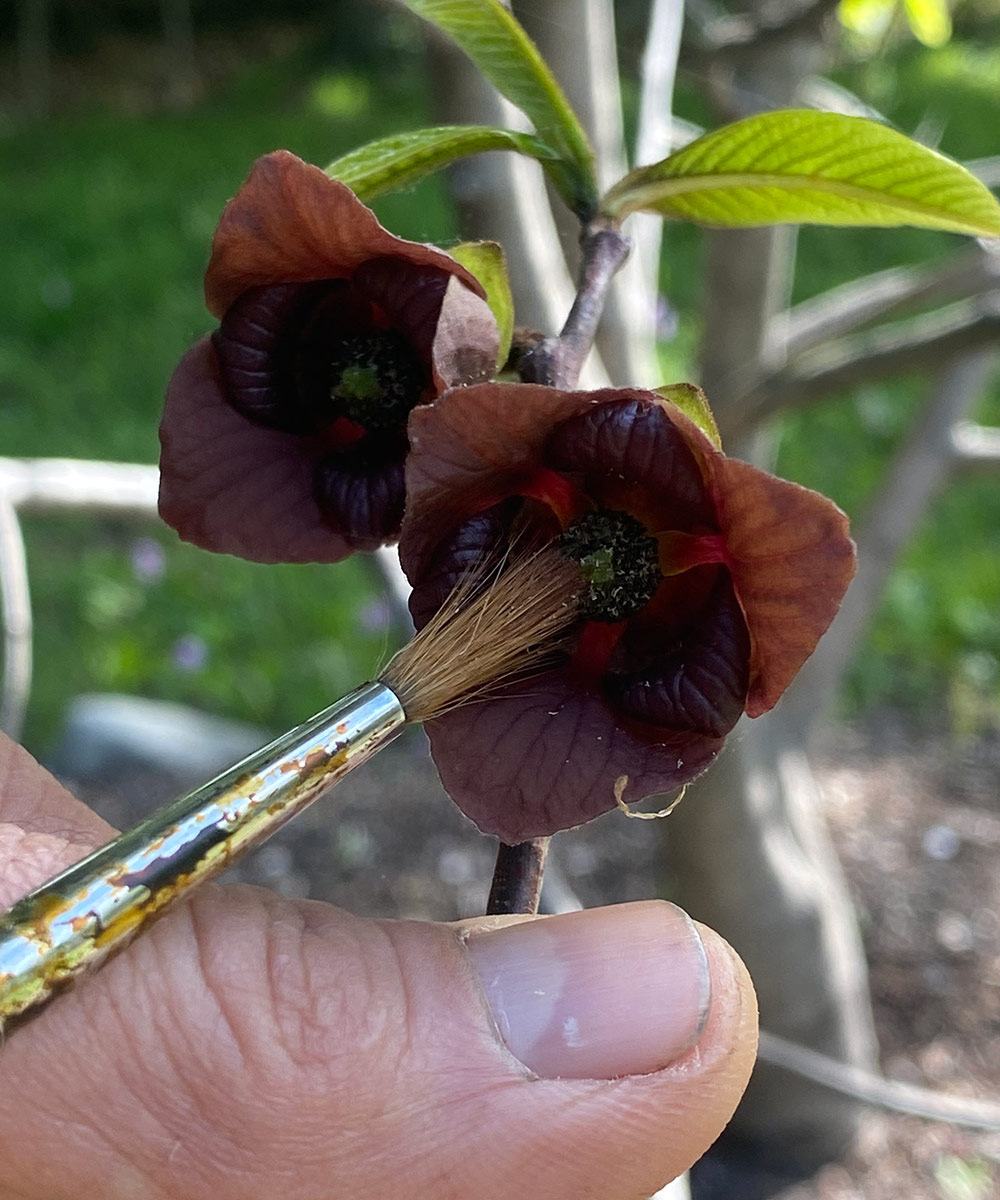 Giving nature a little helping hand or rather, helping paintbrush. While we should work hard to protect and support our pollinators, there will always be plants that get passed by and could use some human intervention. Other vegetable garden staples like squash and pumpkin also have a hard time getting pollinated, and this technique can be vital in ensuring a hardy harvest.
Giving nature a little helping hand or rather, helping paintbrush. While we should work hard to protect and support our pollinators, there will always be plants that get passed by and could use some human intervention. Other vegetable garden staples like squash and pumpkin also have a hard time getting pollinated, and this technique can be vital in ensuring a hardy harvest.
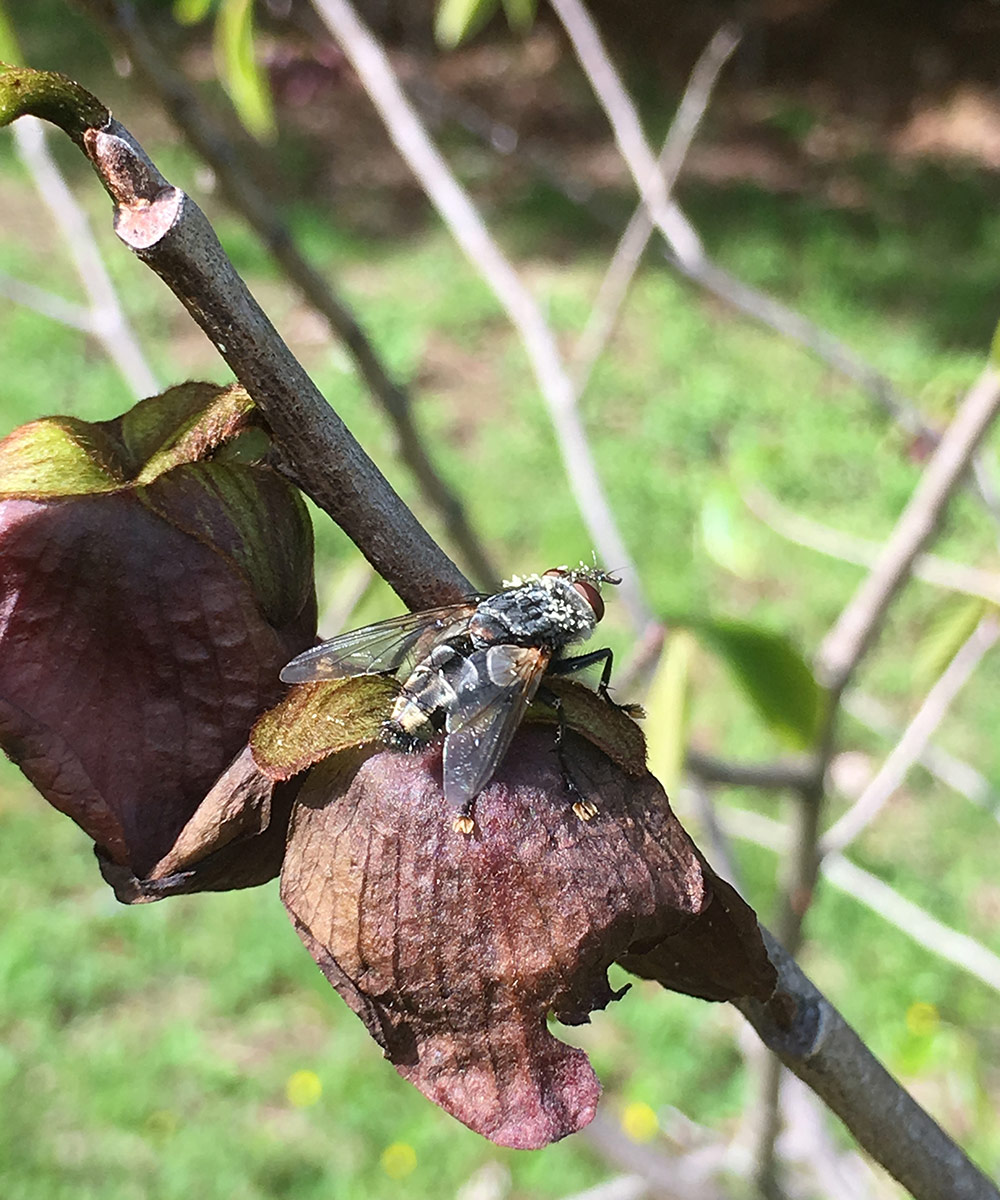 With that being said, there is something so satisfying about seeing a pollinator at work. As Allyson and Scott mentioned, flies are the main pollinator for pawpaw and you’ll likely never see a bee fly toward their stinky blooms. I am seeing some sources say some beetles will also pollinate pawpaw, but the paintbrush method does seem to be used by most everyone that grows these interesting trees.
With that being said, there is something so satisfying about seeing a pollinator at work. As Allyson and Scott mentioned, flies are the main pollinator for pawpaw and you’ll likely never see a bee fly toward their stinky blooms. I am seeing some sources say some beetles will also pollinate pawpaw, but the paintbrush method does seem to be used by most everyone that grows these interesting trees.
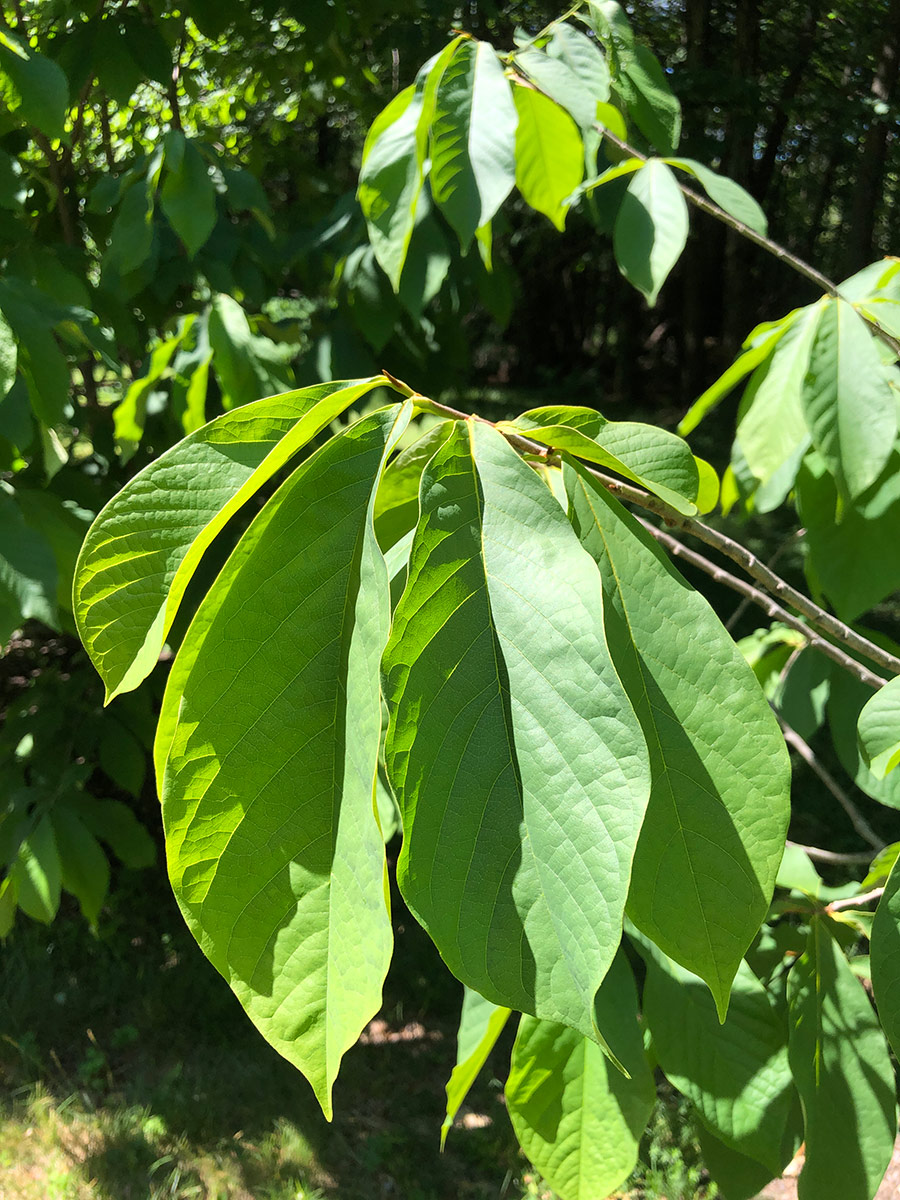 Another feature often not found in other fruit trees is stand-out foliage. Most fruit trees are coveted for their flowers and their fruit, with foliage being an after thought unless it happens to provide some fall color. Pawpaw, on the other hand, has beautiful foliage that can add a tropical flair to the garden. Being a tree that takes years to produce fruit, you won’t have to worry about a lack of interest in the mean time.
Another feature often not found in other fruit trees is stand-out foliage. Most fruit trees are coveted for their flowers and their fruit, with foliage being an after thought unless it happens to provide some fall color. Pawpaw, on the other hand, has beautiful foliage that can add a tropical flair to the garden. Being a tree that takes years to produce fruit, you won’t have to worry about a lack of interest in the mean time.
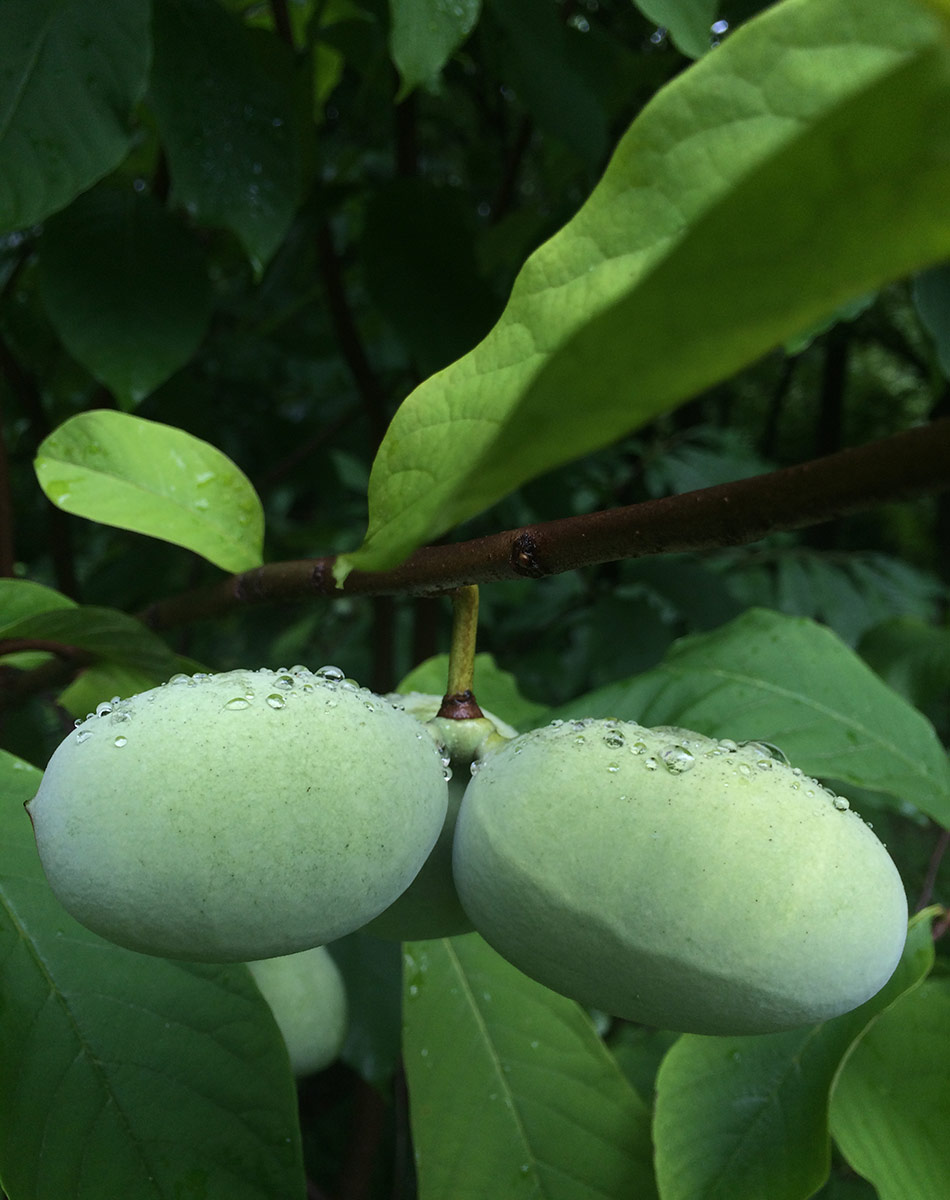 And when your tree finally comes to maturity, wow, those fruit are really worth the wait!
And when your tree finally comes to maturity, wow, those fruit are really worth the wait!
The more the fruit ripens, the more out-of-this-world they look. It’s like the oddest bunch of bananas you’ve ever seen.
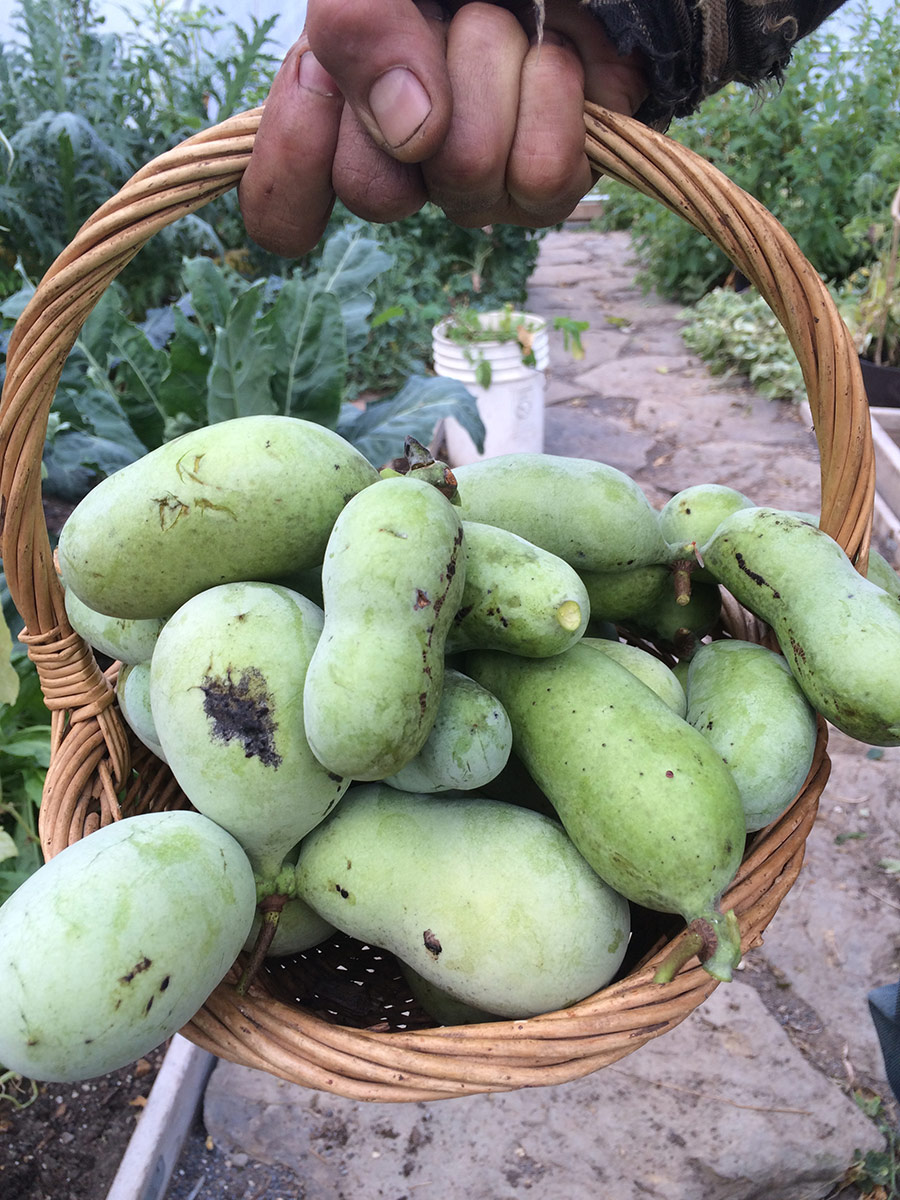 With each cluster consisting of usually two to five fruits, a bountiful harvest can come quickly. I can only imagine the number of fruit Allyson and Scott harvest by the end of the season.
With each cluster consisting of usually two to five fruits, a bountiful harvest can come quickly. I can only imagine the number of fruit Allyson and Scott harvest by the end of the season.
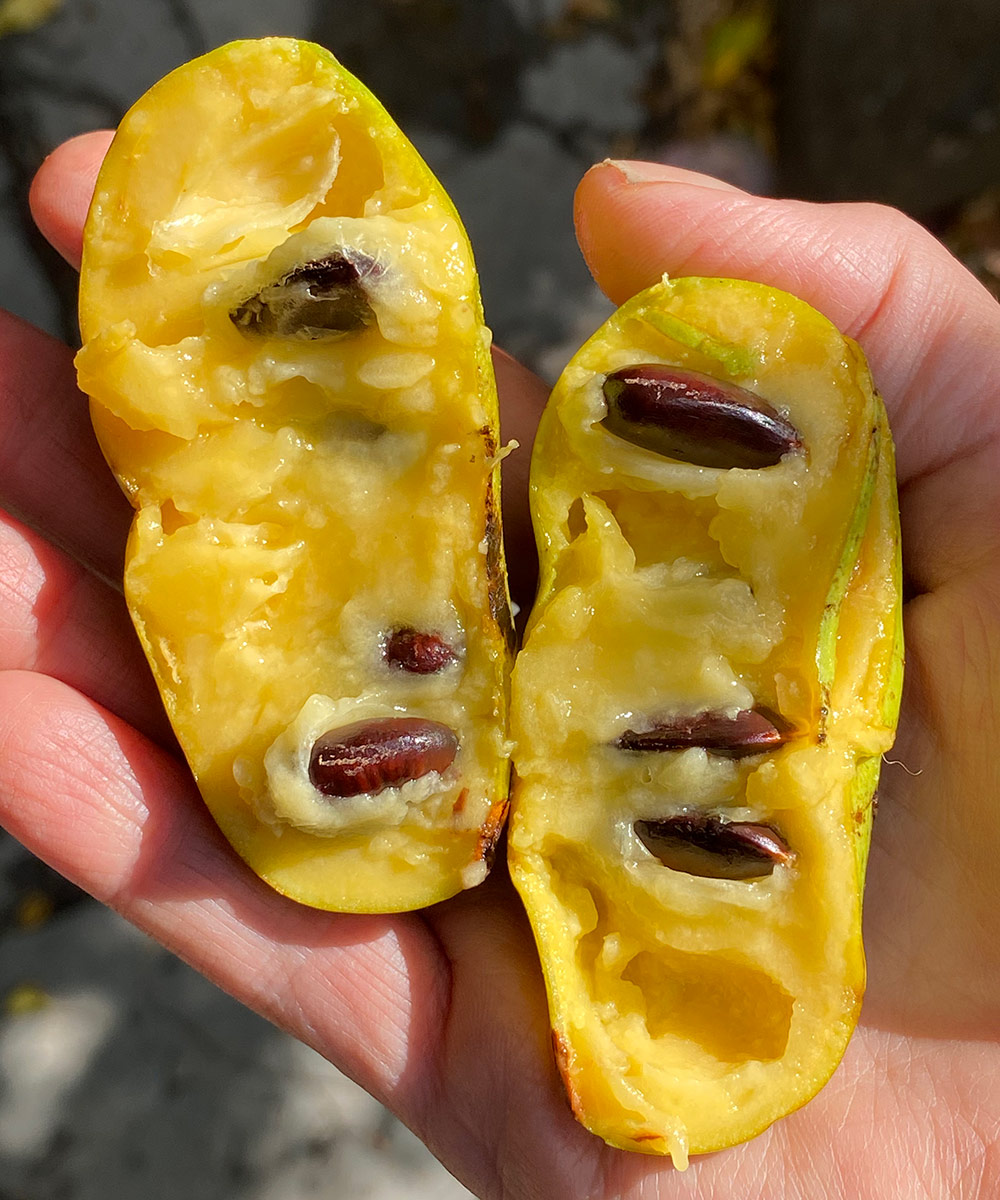 And that sweet, exotic-looking flesh. It’s really amazing that a North American native can produce fruit so similar in taste and texture to trees that only survive in tropical climates.
And that sweet, exotic-looking flesh. It’s really amazing that a North American native can produce fruit so similar in taste and texture to trees that only survive in tropical climates.
Thank you Allyson and Scott for such an insightful and informative submission! While I’m not quite ready to plant pawpaw of my own, I’m already itching to get up to New York to check out your land and try one of these incredible fruits.
Photos: courtesy of Hortus Arboretum and Botanical Garden
Have a garden you’d like to share?
Have photos to share? We’d love to see your garden, a particular collection of plants you love, or a wonderful garden you had the chance to visit!
To submit, send 5-10 photos to [email protected] along with some information about the plants in the pictures and where you took the photos. We’d love to hear where you are located, how long you’ve been gardening, successes you are proud of, failures you learned from, hopes for the future, favorite plants, or funny stories from your garden.
Have a mobile phone? Tag your photos on Facebook, Instagram or Twitter with #FineGardening!
Do you receive the GPOD by email yet? Sign up here.
Fine Gardening Recommended Products

XLUX Soil Moisture Meter
– Large and clear dial, including ten scales, plug and read
– Simply insert the moisture meter into soil and you’ll get the test result instantly
– Single probe, less hurts to the roots, doesn’t dig up too much soil after test
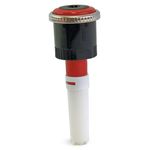
Hunter Industries MP-1000-90 Hunter Nozzle
– 8′ to 15′ radius with an adjustable arc of 90° to 210°, radius can be reduced by up to 25% to fit landscape needs
– Double-pop technology flushes the nozzle during start-up and shutdown to prevent clogging
– Wind-resistant, multi-directional streams provide even coverage

Rain Bird PATIOKIT Drip Irrigation Patio Watering Kit
– Complete 42-piece drip irrigation kit eliminates watering by hand
– Provides drip irrigation for up to 6 planters
– Easy to assemble: just attach to faucet, cut tubing and connect watering devices
– Attaches easily to your outdoor faucet or hose

Gilmour 811673-1001 Sprinkler
– 43-ft. spray distance (up to 5, 800 sq. ft. coverage)
– Adjustable collar for partial- to full-circle coverage
– Dial precisely sets spray distance
– On/off switch eliminates trips from sprinkler to spigot

RAINPOINT Sprinkler Timer with Brass Swivel
– Pure brass water inlet and metal thread can withstand up to 116psi.
– Built-in metal filter gaskets can prevent sediment and other larger particles
– Through the Sprinkler Timer program, you can set the start time, watering duration, and watering frequency

